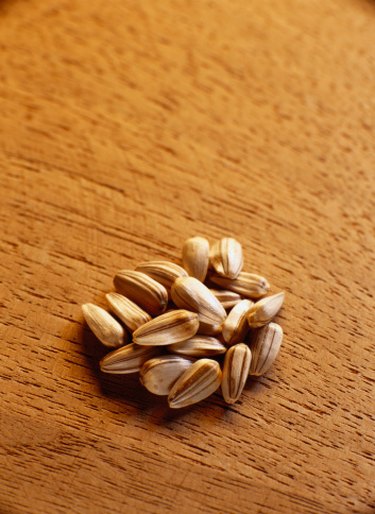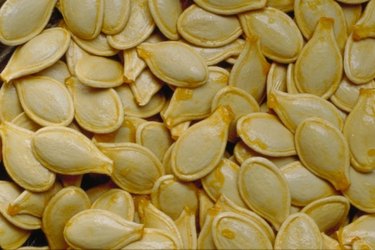
Sunflower seeds seem to be that ubiquitous crack-open snack that's just eaten on occasion and usually on the fly. But their health benefits beg for them to become a staple in an everyday diet. Pumpkin seeds, known as pepitas in Mexican cuisine, haven't quite taken off as an ingredient that goes beyond a salad topper or an addition to trail mix, either. Take a page from the Native American history book and use these nutrient-dense seeds to make a nutty flour that can be baked into breads or used as a healthy addition to soups and stews.
History
Video of the Day
Around 3000 B.C., sunflowers were cultivated in what is Arizona and New Mexico, and later, the seeds were pulverized into flour, or eaten, much like today, as a snack. Some archeologists suggest that these nutty-tasting seeds were cultivated even before corn. Although the sunflower had its origins in the United States as a wild plant, it was first cultivated as a commercial crop in Russia. Pumpkin seeds were also eaten by Native American but food wasn't their only benefit. The seeds were used to treat kidney ailments and parasites.
Video of the Day
Nutritional Benefits

Raw sunflower seeds are excellent sources of both B1 (thiamin) and vitamin E, a fat-soluble anti-oxidant that helps reduce the risk of colon cancer. A small handful of sunflower seeds is also a good source of selenium, which has cancer-fighting properties. Nutrient-rich pumpkin seeds have high levels of manganese, magnesium, phosphorus and tryptophan, the latter of which makes you feel sleepy after you eat a turkey dinner. The phytosterols in both pumpkin seeds and sunflower seeds aid in lowering cholesterol, though sunflower seeds are slightly richer in phytosterols than pumpkin seeds.
Harvesting Seeds
When the giant heads of sunflowers grow heavy with seeds and turn brown (the back will be a dark yellow), the seeds are mature and ready to be harvested. But don't let the birds get to them first! You can cut the heads off, leaving a couple of inches of stalk left, and hang them in a dry place, such as a garage, basement or barn to dry. Sunflower seeds can be eaten raw or roasted. Harvest pumpkin seeds by cutting open the top of a pumpkin using a sharp knife. Scoop out the seeds, separating them from the stringy flesh. Pumpkin seeds can be eaten raw or roasted.
Roasting Seeds

Roasting both pumpkin and sunflower seeds in-shell intensifies the seeds' natural nutty flavor and gives you an opportunity to add seasonings and spices to the mix. To roast sunflower seeds, preheat the oven to 300 F. Spread a layer of sunflower seeds on a sheet tray and bake, stirring occasionally, for up to 40 minutes or until the seeds become golden brown. To roast pumpkin seeds, wash the pulpy pumpkin flesh off the seeds and spread them on a lightly oiled sheet tray. Bake at 325 F, stirring occasionally, for up to 25 minutes or until seeds are lightly roasted.
- The World’s Healthiest Foods: Sunflower Seeds
- The World’s Healthiest Foods: Pumpkin Seeds
- "A 2 Z of Health, Beauty and Fitness": The Benefits of Pumpkin Seeds; Jason Earls
- National Sunflower Association: All About the Sunflower: History of the Amazing Sunflower; 2011
- National Sunflower Association: Health and Nutrition: How to Roast In-Shell Sunflower Seeds; 2011